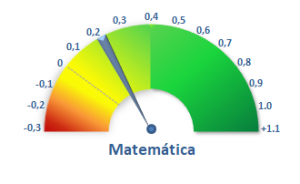Implementing institution: Catch Up
Country: United Kingdom
Source: Education Endowment Foundation
Execution period: 1998 - in progress
Plataforma de Prácticas Efectivas:
Improve the performance of children with math scores below national averages.
A program of individualized reinforcement in mathematics with innovative manuals, and guided by assistant teachers.
Students participating in the program increase their math test scores by 0.21 SD.
Catch Up Numeracy is a program of reinforcement in mathematics through a wide range of accessible online books (8,000), that seeks to develop students’ skills such as counting, solving problems, ordering numbers, among others. Catch Up Numeracy is aimed at students between the ages of 6 and 14 who have difficulties in this subject. In 1998, when the program was created, it targeted 6- and 8-year-olds, based on the research findings of Diana Bentley, Suzi Clipson-Boyles, and Dee Reid. However, it was later extended to young people up to the age of 14, because dramatic gaps in math scores were evident in the youth population.
The books have been divided into 12 levels of difficulty, so that each student, according to their initial and progress performance, has access to a manual adapted to their needs. The intervention consists of 4 stages: i) a diagnosis of the initial capacities that serves to set goals according to the results of the student; (ii) the selection of exercises appropriate to their abilities and tastes; (iii) two individualized tutoring sessions per week; (iv) continuous monitoring of progress and related improvement strategies.
Reinforcement sessions are individual and supervised by a tutor (Teaching Assistants, TA), who is responsible for monitoring the reader’s progress. They last 15 minutes distributed in the preparation of the exercise, the resolution of the exercise, and the discussion of the results. Sessions are given for 30 weeks, after which the student takes a test to see whether or not he or she is still in the program.
For a correct performance of the intervention, the Catch Up Foundation trains the teachers – who train the tutors – during 4 sessions of between 60 and 90 minutes each. In addition, they are given methodological manuals that summarize all the steps to be followed and the corresponding strategies. All those teachers are grouped in the Catch Up community, where they have online support and can discuss their doubts.
In England, the enrolment of children at elementary and secondary levels covers almost the entire population of attendance age (99.85% and 98.28% respectively by 2014). On the other hand, net participation rates have been growing since 2006, especially at the secondary level (+6 percentage points). However, the OECD’s PISA survey has highlighted, for example, levels of mathematical comprehension among part of the 15-year-old English population, barely above the average for advanced countries (492 vs. 490 respectively). As a result of this situation, the English Ministry of Education has proposed, within its strategic axes (2015-2020 plan), the need to promote student-centred teaching methods in order to advance both in this area and in language.
Between 2013 and 2014, the National Foundation for Educational Research has evaluated the Catch Up Numeracy program with funding from the Education Endowment Foundation. The experimental study involved 324 students from 54 different schools, divided into three groups: one that received the conventional courses (A), another one that participated in the intervention (B), and a third one, that received individualized tutorials, but without the Catch Up methodology (C). The comparison of groups A and B at the end of the intervention (30 weeks) showed an increase of 0.21 SD of their results. However, the increase was greater in the case of group C (+0.27), which means that the positive effect of Catch Up Numeracy is profoundly dependent on the individualized tutoring system.
The costs of intervention are not low (£130 per student), but the program is an effective and timely innovation to raise the mathematical performance of elementary school children.
Impact of interventions:

Charts: Impact measured in standard deviations of the intervention group compared to the control group
Tags: